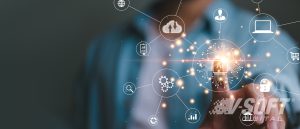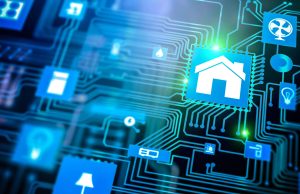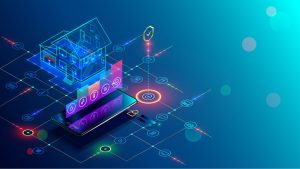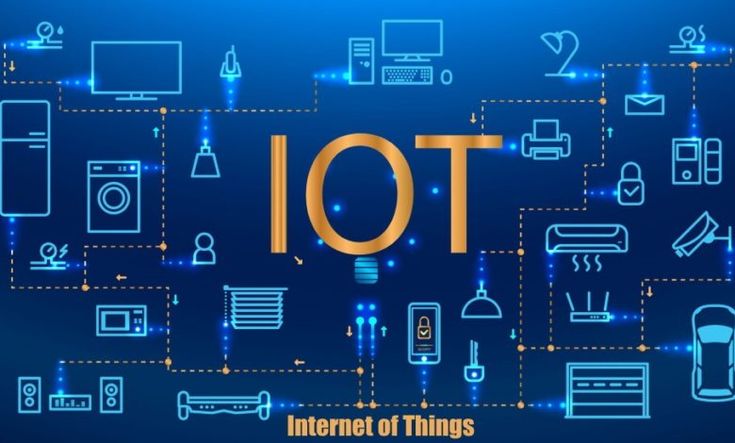Smart devices and the Internet of Things (IoT) are two of the most transformative technologies of our time. From smart homes and wearable devices to industrial automation and smart cities, the use of smart devices and IoT is revolutionizing the way we interact with our environment and each other.
Smart devices are essentially everyday objects such as watches, thermostats, and doorbells that have been enhanced with sensors and connectivity, allowing them to collect and exchange data with other devices and the cloud. IoT refers to the network of interconnected devices that can communicate with each other and exchange data without human intervention. This technology has the potential to transform industries ranging from healthcare and agriculture to transportation and logistics.
In this presentation, we will dive deep into the world of smart devices and IoT, exploring the latest trends, technologies, and use cases. We will discuss the challenges and opportunities presented by this technology, as well as the impact it is having on our daily lives and the economy. Whether you are a business leader, entrepreneur, or technology enthusiast, this presentation will provide you with a comprehensive understanding of the world of smart devices and IoT, and how you can leverage this technology to drive innovation and growth in your organization.
Discover the world of smart devices and IoT with our comprehensive guide. From wearables and smart homes to industrial automation and smart cities, we’ll take you on a deep dive into the latest trends, technologies, and use cases of these transformative technologies. You’ll learn how smart devices and IoT are revolutionizing industries and reshaping the way we interact with our environment and each other.
Our guide will explore the challenges and opportunities presented by this technology, including security concerns, data privacy, and the need for interoperability. We’ll also discuss the impact that smart devices and IoT are having on the economy, from new business models and revenue streams to job creation and economic growth.
Whether you’re a business leader, entrepreneur, or technology enthusiast, this guide is an essential resource for anyone looking to stay ahead of the curve in the world of smart devices and IoT. You’ll gain a comprehensive understanding of the latest technologies and their potential applications, as well as practical advice on how to leverage this technology to drive innovation and growth in your organization.
Our team of experts has researched and analyzed the latest trends and developments in the world of smart devices and IoT, ensuring that our guide is up-to-date and informative. So join us on this exciting journey and discover the limitless potential of smart devices and IoT.
What are some examples of smart devices and IoT in everyday life?

Smart devices and IoT are becoming increasingly common in our daily lives. Here are some examples of smart devices and IoT applications that you might encounter:
Smart home devices: Smart thermostats, lighting systems, security cameras, and door locks that can be controlled through a mobile app or voice command.
Wearable devices: Smartwatches, fitness trackers, and medical devices that can track your activity, health metrics, and vital signs.
Smart transportation: Connected cars that can communicate with other vehicles and infrastructure to optimize traffic flow and enhance safety.
Smart retail: Automated checkout systems, inventory management systems, and personalized marketing based on customer data collected from smart devices.
Smart cities: Intelligent traffic management systems, smart waste management, and environmental monitoring systems that can help cities become more efficient and sustainable.
How does IoT impact industries such as healthcare, agriculture, transportation, and logistics?
IoT has the potential to transform many industries by enabling real-time monitoring, automation, and data-driven decision-making. Here are some examples of how IoT is impacting different industries:
Healthcare: IoT-enabled medical devices can monitor patients’ health remotely and alert healthcare professionals to potential issues. IoT can also improve the efficiency of healthcare operations, such as inventory management and patient flow.
Agriculture: IoT sensors can monitor soil moisture, temperature, and nutrient levels to optimize crop yields and reduce water and fertilizer usage. IoT can also improve supply chain visibility and logistics in agriculture.
Transportation: IoT can enable predictive maintenance and real-time monitoring of vehicles, as well as enhance safety through collision avoidance systems and vehicle-to-vehicle communication.
Logistics: IoT can improve supply chain visibility, reduce transportation costs, and enhance customer experience through real-time tracking and delivery notifications.
What are the security and privacy concerns related to smart devices and IoT?

As smart devices and IoT become more widespread, security and privacy concerns are becoming increasingly important. Here are some of the key concerns:
Data privacy: IoT devices can collect sensitive personal data, such as health information, location data, and financial data. There is a risk that this data could be accessed by unauthorized parties or used for malicious purposes.
Cybersecurity: IoT devices can be vulnerable to cyberattacks, which can compromise the device’s functionality or allow an attacker to access other devices or networks.
Interoperability: As the number of IoT devices and platforms increases, there is a risk that different devices may not be compatible or secure when connected, potentially leading to security vulnerabilities.
Lack of regulation: There is a lack of standardized security and privacy regulations for IoT devices, making it difficult for consumers and businesses to ensure that their devices are secure and compliant.
How can businesses and organizations leverage smart devices and IoT to drive innovation and growth?
Smart devices and IoT offer many opportunities for businesses to innovate and grow. Here are some ways businesses can leverage these technologies:
Data analytics: IoT devices can collect vast amounts of data, which can be analyzed to gain insights into customer behavior, product performance, and operational efficiency.
Automation: IoT can enable automation of many business processes, from inventory management to manufacturing and supply chain management.
Personalization: IoT can enable businesses to personalize their products and services based on customer data collected from smart devices.
New revenue streams: IoT can enable businesses to create new revenue streams by offering value-added services, such as predictive maintenance and remote monitoring.
What are some examples of smart devices and IoT in everyday life?
Smart home devices are becoming increasingly popular, with devices such as smart thermostats, lighting systems, security cameras, and door locks allowing users to control their homes remotely using a mobile app or voice command. Wearable devices such as smartwatches, fitness trackers, and medical devices are also common, with many people using them to track their activity, health metrics, and vital signs. In transportation, connected cars are becoming more common, enabling cars to communicate with other vehicles and infrastructure to optimize traffic flow and enhance safety.
In retail, automated checkout systems, inventory management systems, and personalized marketing based on customer data collected from smart devices are becoming more common. In cities, intelligent traffic management systems, smart waste management, and environmental monitoring systems are being implemented to help cities become more efficient and sustainable.
How does IoT impact industries such as healthcare, agriculture, transportation, and logistics?
In healthcare, IoT has the potential to improve patient outcomes and reduce costs by enabling remote patient monitoring and telemedicine. IoT-enabled medical devices can monitor patients’ health remotely and alert healthcare professionals to potential issues, enabling early intervention and reducing the need for in-person visits. In agriculture, IoT sensors can monitor soil moisture, temperature, and nutrient levels to optimize crop yields and reduce water and fertilizer usage.
IoT can also improve supply chain visibility and logistics in agriculture, enabling farmers to track their products from farm to table. In transportation, IoT can enable predictive maintenance and real-time monitoring of vehicles, as well as enhance safety through collision avoidance systems and vehicle-to-vehicle communication. In logistics, IoT can improve supply chain visibility, reduce transportation costs, and enhance customer experience through real-time tracking and delivery notifications.
What are the security and privacy concerns related to smart devices and IoT?
As smart devices and IoT become more widespread, security and privacy concerns are becoming increasingly important. One major concern is data privacy, as IoT devices can collect sensitive personal data, such as health information, location data, and financial data.
There is a risk that this data could be accessed by unauthorized parties or used for malicious purposes. Cybersecurity is also a major concern, as IoT devices can be vulnerable to cyberattacks, which can compromise the device’s functionality or allow an attacker to access other devices or networks. Interoperability is another concern, as the lack of standardized security and privacy regulations for IoT devices can make it difficult for consumers and businesses to ensure that their devices are secure and compliant.
How can businesses and organizations leverage smart devices and IoT to drive innovation and growth?

Smart devices and IoT offer many opportunities for businesses to innovate and grow. One way businesses can leverage these technologies is through data analytics, as IoT devices can collect vast amounts of data that can be analyzed to gain insights into customer behavior, product performance, and operational efficiency. IoT can also enable automation of many business processes, from inventory management to manufacturing and supply chain management, which can improve efficiency and reduce costs.
Personalization is another area where businesses can leverage IoT, as the data collected from smart devices can be used to personalize products and services to individual customers. Finally, IoT can enable businesses to create new revenue streams by offering value-added services, such as predictive maintenance and remote monitoring, which can create new opportunities for growth.
What is the role of 5G in the growth of smart devices and IoT?
5G networks offer faster speeds, lower latency, and greater capacity than previous generations of mobile networks, which makes them ideal for powering the growth of smart devices and IoT. With 5G, it will be possible to connect more devices at faster speeds, enabling more advanced use cases such as autonomous vehicles and remote surgery. Additionally, 5G’s low latency will enable real-time communication between devices, which is essential for applications such as industrial automation and augmented reality.
How are governments and regulators responding to the growth of smart devices and IoT?
Governments and regulators are starting to take notice of the potential risks associated with smart devices and IoT, and are starting to introduce regulations and standards to ensure that these technologies are safe and secure. For example, the European Union’s General Data Protection Regulation (GDPR) sets strict rules for how companies can collect, store, and use personal data, while the California Consumer Privacy Act (CCPA) provides similar protections for California residents. In addition to data privacy regulations, governments are also working on cybersecurity regulations to address the growing threat of cyberattacks on IoT devices.
How can consumers ensure that their smart devices are secure and protect their privacy?
Consumers can take several steps to ensure that their smart devices are secure and protect their privacy. First, they should only purchase devices from reputable manufacturers that have a track record of providing regular security updates. Second, they should change default passwords on all smart devices and use strong, unique passwords for each device. Third, they should keep their devices up to date with the latest firmware updates and security patches. Fourth, they should be aware of the permissions they grant to smart device apps and ensure that they only provide necessary access to personal data. Finally, they should consider using a virtual private network (VPN) to encrypt their internet traffic and protect their online privacy.
What is the future of smart devices and IoT?
The future of smart devices and IoT looks promising, with continued growth expected in both the consumer and industrial markets. As more devices become connected, the amount of data generated will continue to grow exponentially, which will drive the need for more advanced analytics and machine learning algorithms to make sense of the data. In addition to this, the integration of 5G networks, artificial intelligence, and edge computing will enable new use cases such as autonomous vehicles, smart cities, and personalized medicine. However, as the number of connected devices continues to grow, it will be important for governments, businesses, and consumers to work together to ensure that these technologies are safe, secure, and used responsibly.
Conclusion:
Smart devices and IoT have already transformed the way we live and work, and their impact will only continue to grow in the coming years. These technologies offer many opportunities for businesses to innovate and grow, and for individuals to improve their quality of life. However, with this growth comes new challenges related to security, privacy, and interoperability, which must be addressed in order to ensure that these technologies are used safely and responsibly. As we move forward into the future, it will be important for governments, businesses, and individuals to work together to build a secure and sustainable future for smart devices and IoT.

